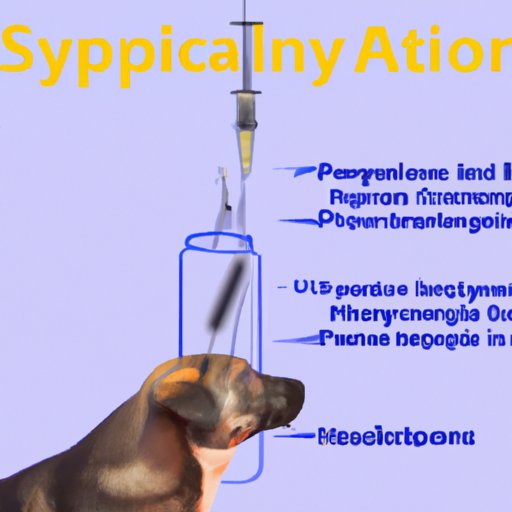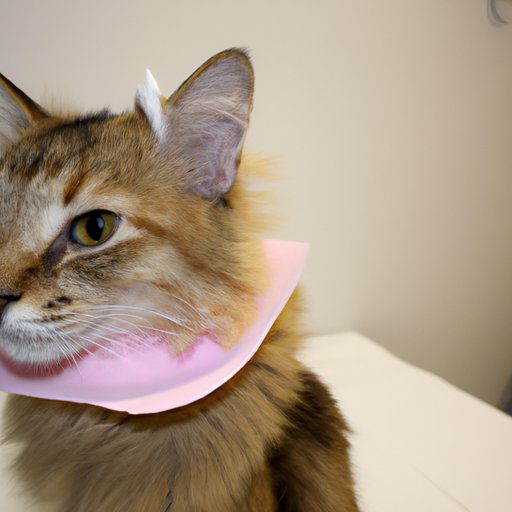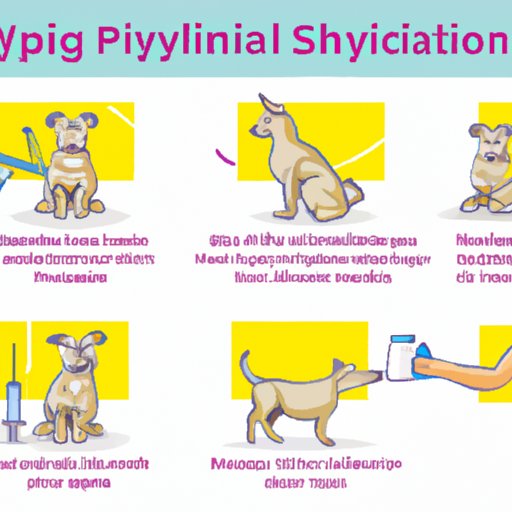Introduction
Spaying is a surgical procedure that involves the removal of an animal’s reproductive organs. The procedure is most commonly performed on female cats and dogs, though it can also be done on other animals such as rabbits and ferrets. Spaying is a safe and relatively straightforward procedure that has numerous health benefits for your pet. This article will provide an overview of the spaying procedure, its benefits and risks, and alternative options to consider.

Explaining the Procedure of Spaying
The spaying procedure typically takes less than an hour under general anesthesia. During the surgery, the ovaries and uterus are removed through an incision in the abdomen. The entire procedure is usually completed within 30 minutes. After the surgery, your pet may need to stay at the veterinary clinic overnight for observation.
Before the procedure, your veterinarian will perform a physical exam and take blood work to ensure your pet is healthy enough for anesthesia. During the surgery, your pet will be closely monitored with an electrocardiogram (ECG) and oxygen saturation monitor. Your pet will also have intravenous fluids to help prevent dehydration.
After the procedure, your veterinarian will provide you with detailed aftercare instructions. These instructions will include how to care for the incision site, signs to watch for, and when to bring your pet back for a follow-up visit.
Benefits of Spaying
Spaying your pet has numerous health benefits. It can improve their overall health and longevity by reducing their risk of certain diseases and eliminating the risk of unwanted pregnancies. Spaying also helps reduce the number of animals entering shelters each year.
By spaying your pet, you can reduce their risk of developing certain types of cancer, including mammary cancer and ovarian cancer. You can also reduce their risk of developing potentially deadly uterine infections, such as pyometra. Additionally, spaying eliminates the risk of your pet becoming pregnant, which can help reduce the number of unwanted litters.

Risks and Complications of Spaying
While spaying is generally a safe and routine procedure, it does carry some risks and potential complications. The most common risks associated with spaying are related to the use of anesthesia, including respiratory and cardiac issues. Additionally, there is a risk of infection at the incision site, bleeding, and excessive scarring.
It’s important to discuss any potential risks with your veterinarian prior to the procedure so you can make an informed decision. Your veterinarian can also provide you with information about pain management during the recovery period.
Preparing Your Pet for Spaying
Prior to the spaying procedure, it’s important to prepare your pet for the surgery. Your veterinarian may recommend pre-surgical blood work to check for any underlying medical conditions that could affect the outcome of the procedure. It’s also important to follow any dietary or exercise restrictions your veterinarian recommends.

The Recovery Process After Spaying
After the spaying procedure, your pet will need time to recover. During the recovery period, it’s important to provide your pet with adequate pain relief and limit their activity level. Signs of infection or other complications should be reported to your veterinarian immediately.
Alternatives to Spaying
If you don’t want to spay your pet, there are a few alternative options to consider. Vasectomy is a procedure that involves the removal of the testicles and is typically performed on male cats and dogs. Tubal ligation is a procedure that involves the blocking of the fallopian tubes and can be performed on female cats and dogs. Ovary-sparing spay is another option that involves the removal of the uterus but not the ovaries and is typically only recommended for younger animals.
Conclusion
Spaying is a safe and relatively straightforward procedure that can help improve the health and longevity of your pet. While there are some risks and potential complications, these can usually be avoided with proper preparation and aftercare. If you don’t want to spay your pet, there are alternative options available. Talk to your veterinarian about the best option for your pet.
(Note: Is this article not meeting your expectations? Do you have knowledge or insights to share? Unlock new opportunities and expand your reach by joining our authors team. Click Registration to join us and share your expertise with our readers.)
